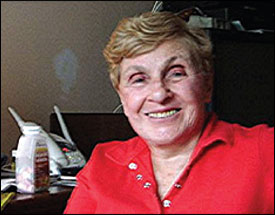
Am Fam Physician. 2007;76(4):513

The symptoms started in 1983. I woke up in the middle of the night with a pain, as if I were being jabbed with hot needles, running from my knee to my ankle on my right leg. When I started to walk, the symptoms disappeared. I would go back to bed and sleep for another hour and a half and it would start all over again. This went on for three days. Then, the same symptoms began in the left leg. After that, the right leg would start, and after an hour and a half, the left leg. It took a long time to get a diagnosis. A neurologist I went to thought it was a psychological problem because it only happened at night. I finally found a doctor who knew immediately what the problem was and he put me on medication.
You see people sitting on the train with their legs jerking back and forth. But that's not a typical symptom of restless legs. I run a support group, where what you see is people just getting up to walk. You can almost feel it coming on. You just get up and it goes away. One of the guys in my support group doesn't want to disturb his wife and children, so he goes down and walks in their building's laundry room. He always takes a piece of clothing with him to throw into the washer so people won't be alarmed at his hanging around. I can't go to the theater at night, only in the afternoon. I request an aisle seat and I sometimes have to leave at the intermission. Ninety minutes is about the length of time I can stay sitting.
It's definitely in the family. I'm one of eight siblings. All of us have had it or have it. My mother had it. It was not diagnosed, but I remember her saying that at night she had to get up because her knees were hurting her.When I went to the movies with my older sister, she would always stand in the back. The children of my brothers all have it. My nephew's wife says that sleeping with him is like sleeping with Fred Astaire.
When I first took medication, it felt like I had discovered a miracle. I didn't know what it was to sleep more than an hour and a half at a time. Now, I get up to six hours' sleep. We have a wonderful little commercial on television. There's a chair and the person is supposed to be sitting in the chair, but it's empty because the person can't sit.—c.s., 78
Commentary
The pathophysiology of restless legs syndrome (RLs) is poorly understood. Symptoms are mediated at several levels of the central nervous system. Dopaminergic neurotransmission and iron metabolism in the subcortical regions of the brain have been implicated. There is evidence suggesting RLs is a primary pain modulation disorder involving central sensitization at the spinal cord level.1 RLs has been found to follow neurologic insults, so this patient's pain may result from an interaction between a centrally mediated process and nerve root compression from lumbar disk herniation. This story reminds us that patients do not always present with classic symptoms.